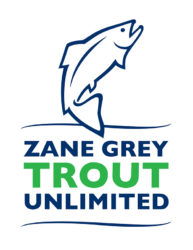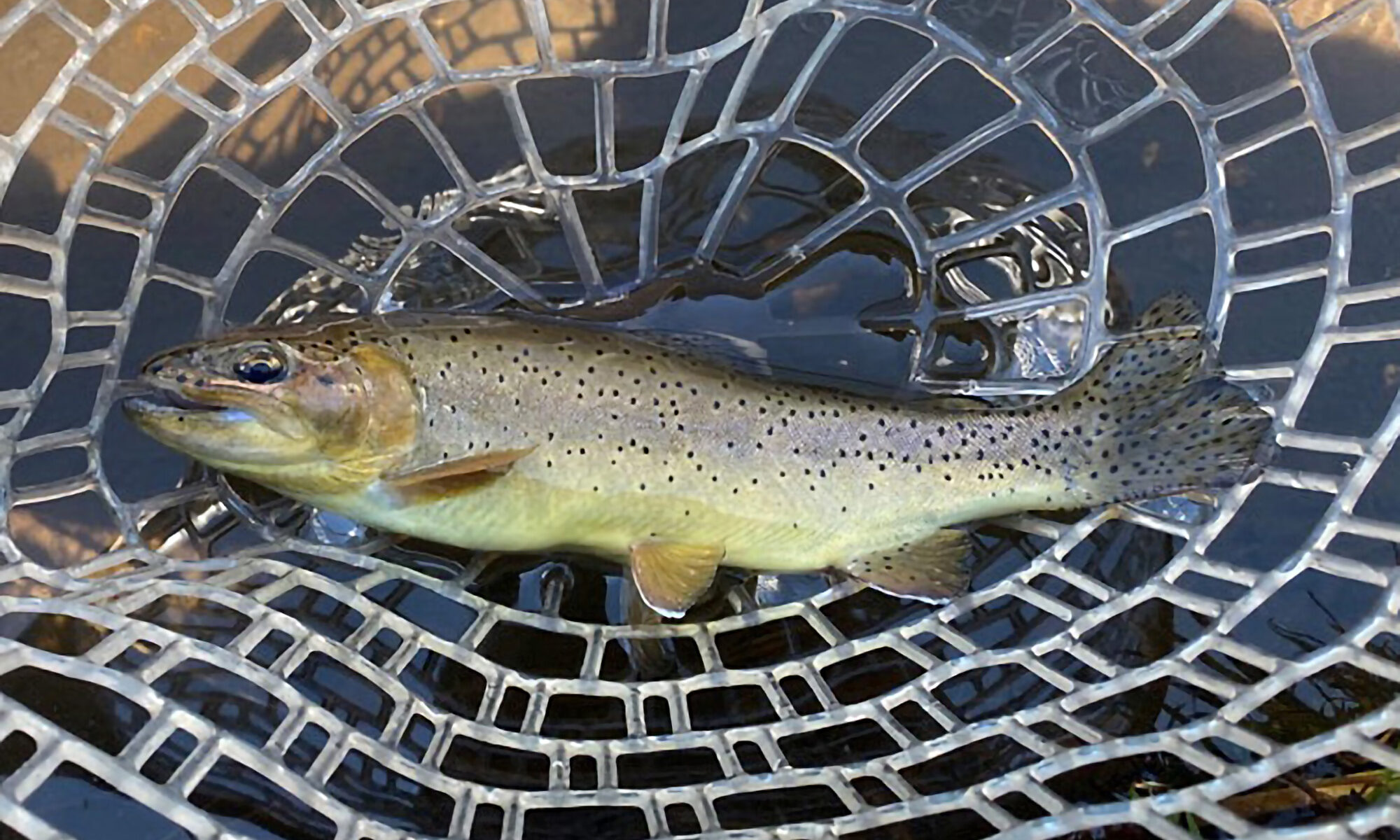In a first, a salmonid is on track for delisting from the list of threatened and endangered species. The promise of gold and opportunity has long been a driving force of settlement across the American West, much to the detriment of native populations and the iconic landscapes now in need of prolonged restoration and conservation efforts.
Today, a new gold rush exists to reverse these trends in Arizona. But instead of settlers lugging panning gear and sluice boxes, it is now small groups of anglers carrying upwards of 70 pounds of equipment along miles of remote rivers and streams to count the number of elusive “yellowbellies,” a nickname for a threatened native trout species that survives nowhere else.
Found predominantly in the White Mountains of the Fort Apache Indian Reservation—about four hours east of Phoenix—native Apache trout were plentiful in these mountain headwaters during Arizona’s frontier days, inhabiting nearly 700 miles of streams.
Due to habitat loss and overfishing, the U.S. Fish & Wildlife Service formally listed the Apache trout under the Endangered Species Act (ESA) in 1973, but downlisted it to “threatened” status shortly afterwards in 1975.
Conservation actions led by the White Mountain Apache Tribe over the past decades, however, have compelled Fish & Wildlife to formally recommend delisting Arizona’s state fish from the ESA—a first for a sport fish in our nation’s history.
In its recommendation, the agency commended the cooperation among tribal, state, federal, and non-governmental organizations like TU for the prolonged efforts to secure this conservation victory.
“We would like to thank our partners for their engagement and collaborative efforts alongside the Service towards the recovery of the Apache trout,” said Amy Lueders, Regional Director for the Fish and Wildlife Service. “We are excited to say the recovery actions by the White Mountain Apache Tribe and other partners have led to the recommendation to delist the species from the ESA.”
In connection with this, the recently passed Bipartisan Infrastructure Law also allocates over $2 million from the National Fish Passage Program to remove barriers that are no longer needed thanks to non-native trout removal, which will open up 52 stream miles of Apache trout habitat for new populations.
“The White Mountain Apache Tribe has been a steward of this conservation effort for well over 100 years,” said Alan Davis, chair of Arizona TU. “They truly deserve a monumental amount of credit for recognizing the need to protect this unique species well before anyone else and laying the groundwork decades ago for this conservation win.”
Apache trout, which are closely related to the rainbow, have medium-sized spots spread evenly across their olive body and golden underbelly. The species was a traditional staple of the White Mountain Apache Tribe’s diet until threats and damage to the habitat of the species through forestry practices and the population boom of the late-19th century.
“At the time, settlers were quite reckless, with instances of people catching hundreds of fish per day and calling it their ‘daily catch,’” said Davis.
To try to address this problem, “people brought in browns, rainbows, brookies,” said Tim Gatewood, the White Mountain Apache Tribe’s longtime fisheries manager, in an interview for TROUT magazine in 2017. “These out-competed the Apache trout and pushed them into a few headwater sanctuaries.”
The introduction of non-native trout threw the fragile Apache trout populations into chaos and threatened their genetic integrity and viability, resulting in the Tribe closing the Mount Baldy headwater streams to fishing in 1955 to preserve what was left of the pure-strain Apache trout and its remaining 30 miles of habitat.
“We respect all creatures,” said Gatewood. “We respect the water and the life that was found there in the beginning.
Over the coming decades, the Tribe moved decisively to recognize the Apache trout as deserving of special protection, and protected the trout from hybridization, predation, and further habitat loss through a series of efforts, including non-native fish removal, the construction of conservation barriers to separate Apache trout populations from non-native trout, and the development of a stronger outdoor economy.
Working with state and federal agencies, the tribe also began a hatchery program for Apache trout that today raises millions of trout eggs that are hatched and grown into catchable-size fish. Each year, about 100,000 Apache trout are stocked in lakes in May and June and weekly throughout the summer in area streams, such as the North Fork of the White River.
But this Sisyphean work paid off as a clearer picture of surviving Apache trout populations came into focus. In 2017, TU worked closely with the White Mountain Apache Tribe, U.S. Fish and Wildlife Service, Arizona Game and Fish Department, and the U.S. Forest Service to begin a count of the Apache trout population.
“We worked closely with our partners to establish a scientifically-credible monitoring framework,” said Dan Dauwalter, TU’s fisheries science director, “and then implemented it over the last five years to prove the vitality of Apache trout populations.”
By sampling approximately 20 percent of habitat occupied by the Apache trout, the monitoring went far beyond the typical threshold for trout monitoring.
Based on the findings of the monitoring, Dauwalter and the core team of partners drafted a Species Status Assessment (SSA) for the Apache trout, which provided a science-based assessment of the needs, current status, and future conditions of the species. In turn, the Fish & Wildlife Service relied heavily on these data to justify its formal recommendation to delist the Apache trout.
“What’s noteworthy about the SSA is the longevity and consistent level of cooperation we found with each of our partners throughout this project,” said Dauwalter. “Even during the pandemic, we were able to pursue our objectives and communicate regularly with one another to compile and analyze the data and write the assessment.”
Davis said public interest in fishing and looking for ways to get outdoors sparked during the pandemic.
“Interest in conservation and the Apache trout also took off,” he said. “We had a Zoom presentation providing updates about Apache trout restoration efforts and delisting recommendations that were attended by nearly 300 people.”
Arizona TU drove awareness through both virtual and in-person meetings over the years, including its annual Native and Wild Trout Conference, which educates attendees about the importance of the native species like the Apache trout. They also helped fund conservation efforts for Apache trout through the Arizona Game and Fish Department.
“The Arizona Game and Fish Department is excited about the U.S. Fish and Wildlife Service’s decision to move forward with a delisting proposal for the Apache trout,” said Zach Beard, the native trout and chub coordinator for the department. “This is an amazing opportunity to delist the first native fish species in Arizona thanks to many recovery actions taken by the numerous partners involved in Apache trout recovery.”
The next step by Fish & Wildlife is to publish a proposed rule to delist the Apache trout. The proposed rule, expected by the end of 2022, will include a 60-day comment period seeking input from the general public.
“Much like its history, the Apache trout recovery effort will continue for decades to come,” said Davis. “We look forward to being a part of that story.”
Click HERE to read the full article by Nick Gann at tu.org.

